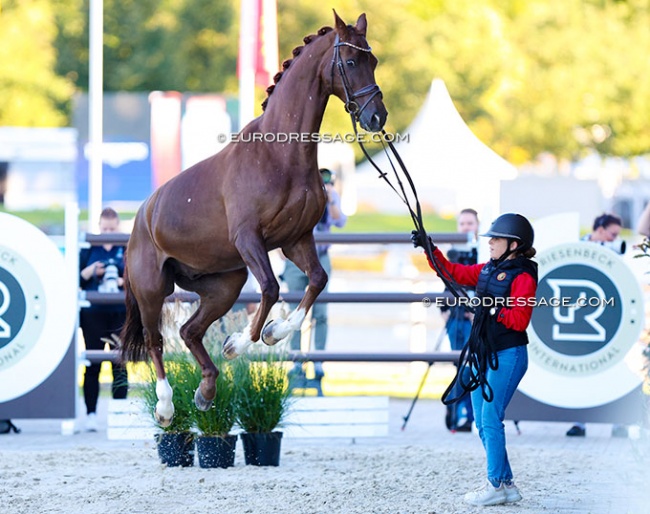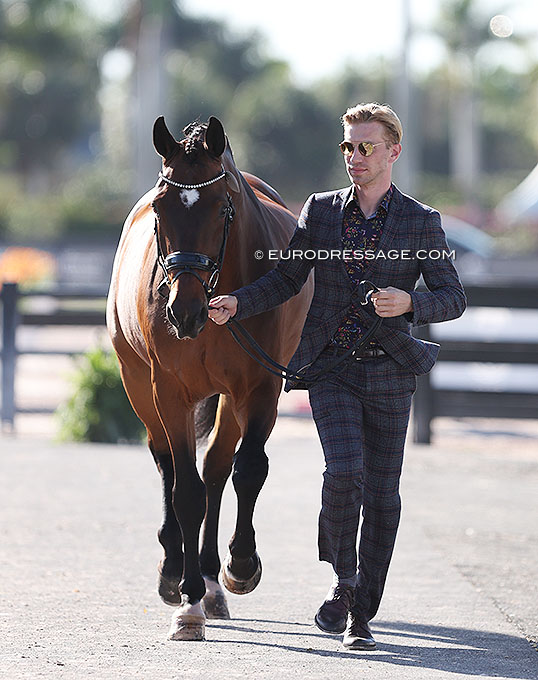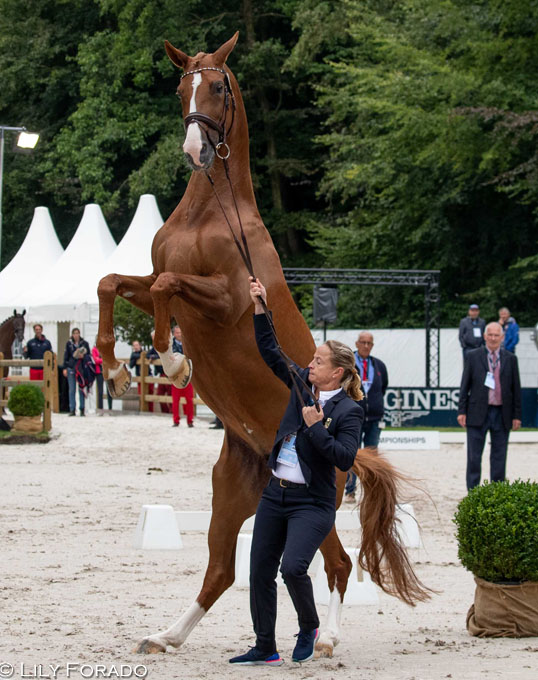
-- Text first published on 4 October in the Galway Gazette newsletter
Call it “the jog,” “the inspection” or the “trot-up.”
By any name, the pre-competition inspection at an FEI event exists to “assess the horse’s fitness to compete,” explains Mike Tomlinson, DVM. The Thousand Oaks, California-based veterinarian is a familiar face as the FEI veterinarian at events around the country and the world and in various disciplines.
He’s often asked why even do the jog when so few horses are found to be unfit, aka “spun.”
“In reality, what the jog does is prevent unfit horses from trying to compete,” he explains. “If your horse isn’t going to pass, you don’t pay the money to be there. It’s a preventative rather than a treatment.”
Spiffily-dressed riders and spit-shined horses strutting their stuff spur “ohs” and “ahs” from the fans during the trot-up. If the horses act up and out in high spirits – it’s all the more exciting and full of fun photo opportunities for the media.

What they want to see is a well-behaved horse trotting with his handler running calmly alongside the horse’s shoulder– 40 meters down, and 40 meters back. No drama, thanks.
That well-behaved horse, however, is more often the exception than the norm, Mike notes. “Some people do an elegant, fabulous job and we notice it. We think, ‘Wow! That person practices.
“It’s not as simple as the horse runs down to the turnaround cone and back. He has to listen to his handler. What happens frequently is that the owner, rider or handler is told to get the horse hyped up so he’ll look better, then the horse doesn’t listen to the handler and looks worse.”
The inspection panel members are looking for symmetry in the horse’s gait – putting equal weight on the right and left side. The horse that gets ahead of its handler, with the handler trying to pull its head back, is effectively moving in a shoulder-in down the jog strip. Symmetry and balance are not possible, Mike explains. The pokey horse being pulled along by its handler looks terrible, too.
Practice!

(Photo © Digishots)
Practicing at home in a quiet place is the best starting point, Mike advises. Get to where your horse knows what he is supposed to do, then practice with friends. “Get four or five horses from your barn, set up a jog track in the arena with 40 meters and a cone at the end. The more you can emulate the show environment, the better. You need to practice enough so that your horse will still listen to you in the excitement of the show.
“Positive reinforcement really works for doing the trot-up,” Mike continues. “If the horse is fearful of it, he’s not going to listen. Take it as a step-by-step process. Make sure your horse is listening to you and that you are working together. You should trot at your horse’s shoulder – not have to pull them and not have them in front of you, pulling you along.”

“I usually tell people that if you have the lead rope or the reins, your horse is probably still behind you.”
The fitness inspection occurs before the dressage phase. At higher levels, there is a second inspection before the final phase.
On-Arrival Health Examination
And before the fitness inspections, there is a health examination on arrival. This used to be called the “in-barn” and it was conducted on each horse in their show stable. It became an on-arrival exam three years ago. That’s when an EHV-1 break-out in Barcelona shut down competition throughout Europe, causing the FEI to re-think the practice of checking horse’s health after they’d already settled into their stabling.
“We’d been saying for a decade that this examination should be done on arrival,” Mike shares. “After you have a few hundred horses in the stable, it’s too late to protect them from a communicable illness one horse might have brought in.”
Since the change, every horse is met at their trailer when they enter the property. “We do a general examination, and check that they are free from communicable illnesses,” Mike explains.

When the in-barn examination switched to being done on the horse’s arrival, it was quicky accepted – even welcomed, Mike recalls. “Most people fully realized the importance of it and how it helped them and saved everybody time because we didn’t have to look at the chip for ID during the jog.”
Photos © Astrid Appels - Digishots - Lily Forado
Related Links
Lisa Marriott Severely Injured in Accident at Horse Inspection for 2023 CDI Addington
Dorothee Schneider Sustains Head Injury at 2013 CDI Mannheim
Two Horses Held for Re-inspection at Early Morning Horse Inspection at 2023 European Championships
A Spring Festival with Unkempt, Frisky Horses at the Trot Up for the 2023 CDIO Compiègne